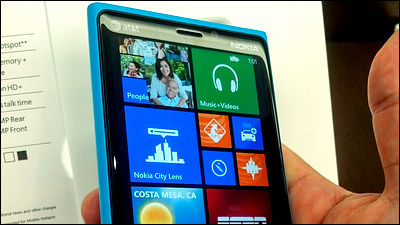Why does the Sega Saturn, which hits the brain directly, have two CPUs?

The Sega Saturn, released by Sega in 1994, is a game machine of the same generation as the original PlayStation, and is known for its catchphrase, ``Direct hit on the brain''. The CPU installed in the Sega Saturn is a ' SH-2 ' chip that uses Hitachi's 32-bit RISC microcomputer architecture ' SuperH RISC engine (SH)', and the previous model has two SH-2 chips in one unit. It was loaded. Renesas Electronics, a former Hitachi semiconductor division, introduces its development episode as to why SH-2 was installed in Sega Saturn.
Development Story Episode 6 | Renesas Electronics
http://web.archive.org/web/20150417010407/http://japan.renesas.com/products/mpumcu/superh/related_sh/theme/story/06.jsp

Sega Saturn Architecture | A Practical Analysis
https://www.copetti.org/writings/consoles/sega-saturn/
Hitachi's SH is a new architecture that incorporates a RISC instruction set and a pipelined data path, and the SH-1 microprocessor was developed in 1992 based on this architecture. However, the shipment volume of the SH-1, which Hitachi developed with confidence, was at the level of several thousand units per month, and it was plagued by the problem that large-scale users did not appear.
There, information jumped into Hitachi's SH development team that Sega, which was considering developing new hardware, had decided not to adopt Hitachi's PA-RISC architecture microcomputer 'PA-10'. In the summer of 1992, the SH development team decided to appeal to Sega again for the SH-1, betting on Hitachi's stigma. And it seems that the development team went to Sega to sell SH-1 many times.
At this time, Sega seems to have considered adopting other companies' chips such as NEC's RISC microprocessor V810 , but as a result of comparing performance, Sega finally chose Hitachi's SH-1. . According to Renesas Electronics, when developer Shunpei Kawasaki visited Sega for several presentations, the first thing Sega responded was, 'Oh, I've decided on SH.' It seems that he was surprised. However, Sega was not satisfied with the performance of the SH-1 and requested that the SH-1's 16-bit multiplier be remade into a 32-bit multiplier. Improvements were made in just two months, and the SH-2 was completed.

by Yaca2671
However, Sega learned of the high 3D rendering performance of the PlayStation developed by Sony and the NINTENDO 64 of Nintendo, which were competitors, and just before mass production of the SH-2 began, 'With the computing performance of the SH-2, it will be a next-generation game machine. is insufficient.” In order to increase the computational performance, we could raise the clock frequency of the SH-2, but in that case we would have to completely rethink the design of the SH-2, and Hitachi didn't have the time to do that.
Therefore, Hitachi responded to Sega's expectations by using the
That's why the early model of the Sega Saturn is equipped with two SH7604 (HD6417095) SH-2 microcomputer CPUs that operate at a maximum frequency of 28.63 MHz (PDF file) , and the late model has two chips in one. One integrated HD6417098 is installed. Both chips are physically identical, but one is the master and the other the slave, with the master sending commands to the slave. As a result, although both share the same external bus, it is possible to achieve some degree of parallel processing. However, it seems that the performance is not simply doubled just because two SH-2s are installed.
Below is the Sega Saturn (early model) board, and you can see that two SH-2s are installed.

The memory installed in the Sega Saturn consists of 2 blocks, totaling 2MB. One block was 1MB SDRAM (WRAM) with fast access speed and the other was normal 1MB DRAM (WRAM-L) with slightly slower access speed. Hitachi's SH uses a RISC-type instruction architecture with a 16-bit instruction length, so the size of the program can be reduced, which was a great advantage for the Sega Saturn, which has a small memory configuration. Also, since the SH-2 has a 32-bit address bus, it can fetch two instructions in one cycle. In addition, by adopting pipeline processing that divides instructions into five stages and executes them, speeding up of processing is realized.
In addition, a coprocessor called Saturn Control Unit (SCU) was also installed for the purpose of supporting two SH-2s. This coprocessor consists of a DMA controller and a Digital Signal Processor (DSP). The former was able to control memory access, and the latter was able to perform matrix and vector calculations such as 3D conversion and lighting at high speed. However, the drawback was that SCU could not access WRAM-L.
The Sega Saturn was released in November 1994, but as of July 1994, the SH-2 was mass-produced at a pace of 200,000 units per month. According to Renesas Electronics, a total of 7.56 million units of the Sega Saturn were manufactured by the end of March 1997, so about 15 million SH-2s were shipped for the Sega Saturn. Thanks to the Sega Saturn, Hitachi's SH chip has become the world's second largest RISC microcomputer. In addition, we are also designing to reduce the chip area of SH-2 even before SH-2 is mass-produced, and as a result, the late model of Sega Saturn is equipped with HD6417098, which has two SH-2s on one chip. It has been.
In addition, the SH-2's mass production system has improved the profitability of the SH chip, and the successor model, the SH-3, has been adopted for personal digital assistants equipped with Windows CE, such as Casio's Cassiopeia .
Related Posts:







